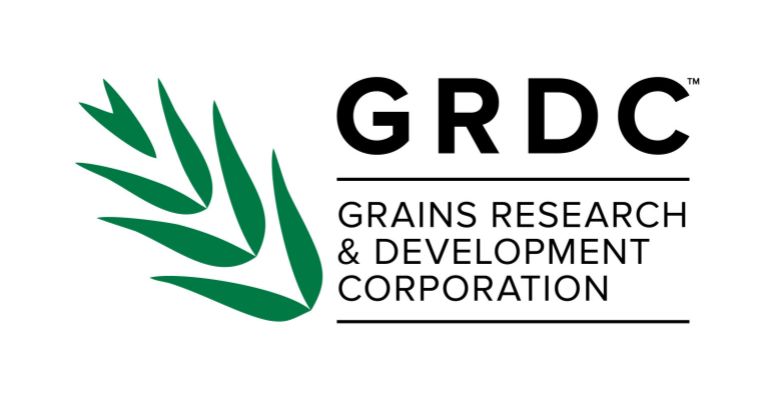About the Australian Grains Genebank
The Australian Grains Genebank (AGG) is the national bio-digital resource centre that provides facilitated and informed access to grain crop genetic resources to the Australian grains industry. The Australian Grains Genebank is custodian to one of the largest collections of grain crop species globally including cultivated, landrace and wild relative species of temperate and tropical crops.
The Australian Grains Genebank manages its germplasm in accordance with Australia’s obligation under the International Treaty on Plant Genetic Resources for Food and Agriculture (ITPGR) and is committed to facilitate widespread access to genetic resources for crop improvement aimed at the development of more resilient and productive grain crop varieties.
 The Australian Grains Genebank (AGG) was opened in 2014 as a partnership between the Victorian Government and the Grains Research and Development Corporation (GRDC), and has the mandate to acquire, conserve, maintain and distribute genetic resources to plant breeders and researchers to develop more resilient and productive grain crop varieties for the benefit of the Australian grains industry.
The Australian Grains Genebank (AGG) was opened in 2014 as a partnership between the Victorian Government and the Grains Research and Development Corporation (GRDC), and has the mandate to acquire, conserve, maintain and distribute genetic resources to plant breeders and researchers to develop more resilient and productive grain crop varieties for the benefit of the Australian grains industry.
The Australian Grains Genebank is located at the Grains Innovation Precinct Horsham in the heart of the Wimmera cropping region.
Mandate and mission of the Australian Grains Genebank
The Australian Grains Genebank (AGG) mandate is to acquire, conserve, maintain, document, and distribute genetic resources to ensure the Australian grains industry has facilitated and informed access to the plant genetic resources it requires to sustain national productivity targets into the future through the development of climate-change resilient, high-yielding and high-value grain crop varieties for the enduring profitability of Australian grain growers.
The mission of the AGG is to utilise genomic and phenomic technologies to ensure germplasm is characterised to conserve maximum genetic diversity for each crop, improve curation efficiency and facilitate the informed selection of useful genetic variation and its use in research and breeding.
Core Genebank operations
The Australian Grains Genebank (AGG) operates to international best practice standards across acquisition, conservation, maintenance, documentation, and distribution of germplasm. The Genebank is using digital and genomic innovation to characterise the genetic diversity within its collection to improve genebank management and operational efficiencies across all core activity areas. This innovation provides the Australian grains industry with validated and enriched accession passport information, which facilities the identification of accessions with desirable traits which are employed in pre-breeding and breeding to and acceleratesaccelerates the delivery of improved grain crop varieties for Australia.
Acquisition
The Australian Grains Genebank (AGG) acquires new seed lines, or germplasm, each year by importing from overseas, through deposits from Australian organisations, and through collecting missions targeting crop wild relatives from around Australia. Germplasm is sourced in accordance with stringent regulations including relevant phytosanitary/quarantine laws, and access and benefit sharing regulations.
Germplasm sourced internationally is imported into Australia following stringent biosecurity protocols mandated by the Department of Agriculture, Fisheries and Forestry, with all lines grown through an approved Plant Biosecurity Glasshouse to ensure pest- and pathogen-free seed lines enter the genebank, thereby safe-guarding the grains industry.
The Genebank adheres to all relevant access and benefit sharing regulations of the International Treaty of Plant Genetic Resources for Food and Agriculture, or alternative material transfer conditions from the source organisation. Domestic, or national, acquisitions are in accordance with relevant laws for genetic resources access, transgenic status, within Australia Biosecurity laws and other considerations as required.
All germplasm that enters the Genebank has relevant information loaded into the GRIN-Global database to improve its management and facilitate use by researchers and breeders. Data stored includes country of origin, taxonomy, name aliases, traits of interest, phenotyping data including morphological characteristics, organisation that donated the germplasm, and other evaluation and genetic data, as well as seed quantity and viability information.

Conservation and storage
All germplasm entering the Australian Grains Genebank (AGG) is classed as orthodox which means it can be dried to low seed moisture and stored at subzero temperatures without killing the seed. At the AGG, seed is dried to 5-8% seed moisture content and sealed into airtight aluminium foil packets before being stored at -20°C.
When entering the Genebank, germplasm is stored as either short term (5 years), medium term (10 years) or long term (50 years plus) depending on the type of material it is. For examples, wild relative species, varieties (cultivars and traditional landraces) and core diversity sets for each crop will be stored for the long term, whilst breeding lines and identified genetic duplicates may be stored for the short or medium term. Under the Genebank cold storage conditions, most seed can survive for more than 50 years or more before losing its ability to grow.
Safety duplication of the Genebank collection is essential to ensure germplasm is not lost. All Genebank accessions are backed up in accordance with international best practice in the National Safety Duplication Facility, and in the Svalbard Global Seed Vault.
Germplasm maintenance
The germination rate of each accession is tested prior to entering cold storage, with routine monitoring after 5, 10 or 20 years depending on the species to determine if the germination rate has declined. The seed is flagged for maintenance through the Genebank’s regeneration process when the germination rate declines to less than 85% of the original rate and the number of seed stored in the Genebank is below the set criteria for each species.
Regeneration, or the grow out, of accessions to generate new seed with high germination and seed quantity is performed under field or controlled greenhouse/glasshouse conditions. The environment (soil type, temperature, irrigation rate, and light) where plants are grown is matched to the requirements of each plant species to ensure healthy plant growth and good seed set, with appropriate pollination control to ensure the genetic integrity of each accession is preserved.
During regeneration, the Genebank records plant characteristics for quality assurance purposes (in accordance with international best practice protocols) and to increase the amount and reliability of trait information available for each accession in order to facilitate its use in research and breeding.
Distribution
The Australian Grains Genebank (AGG) responds to all requests for germplasm by the grains industry. Small quantities of seed are supplied for research, breeding, training and education practices in accordance with relevant international and national policies. The AGG also exports Australian derived germplasm to international organisations to support research and breeding activities in other countries.
Search and make a seed request.

Contact the Australian Grains Genebank (AGG) team
If you have a query about the AGG germplasm or activities, please contact:
Dr Sally Norton
National Leader, Curator
Australian Grains Genebank
Phone: 03 5450 8301
Email: agg.info@agriculture.vic.gov.au